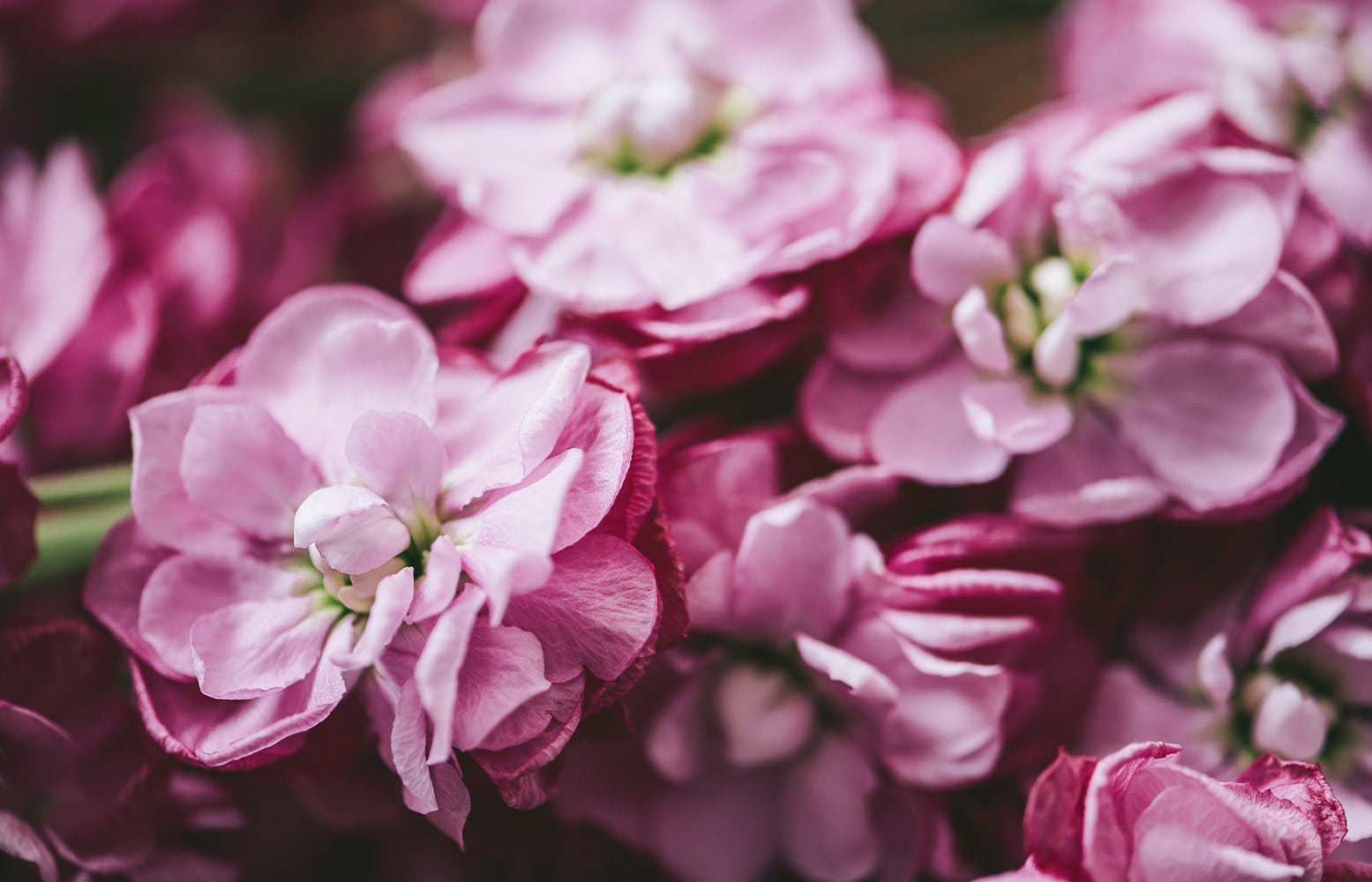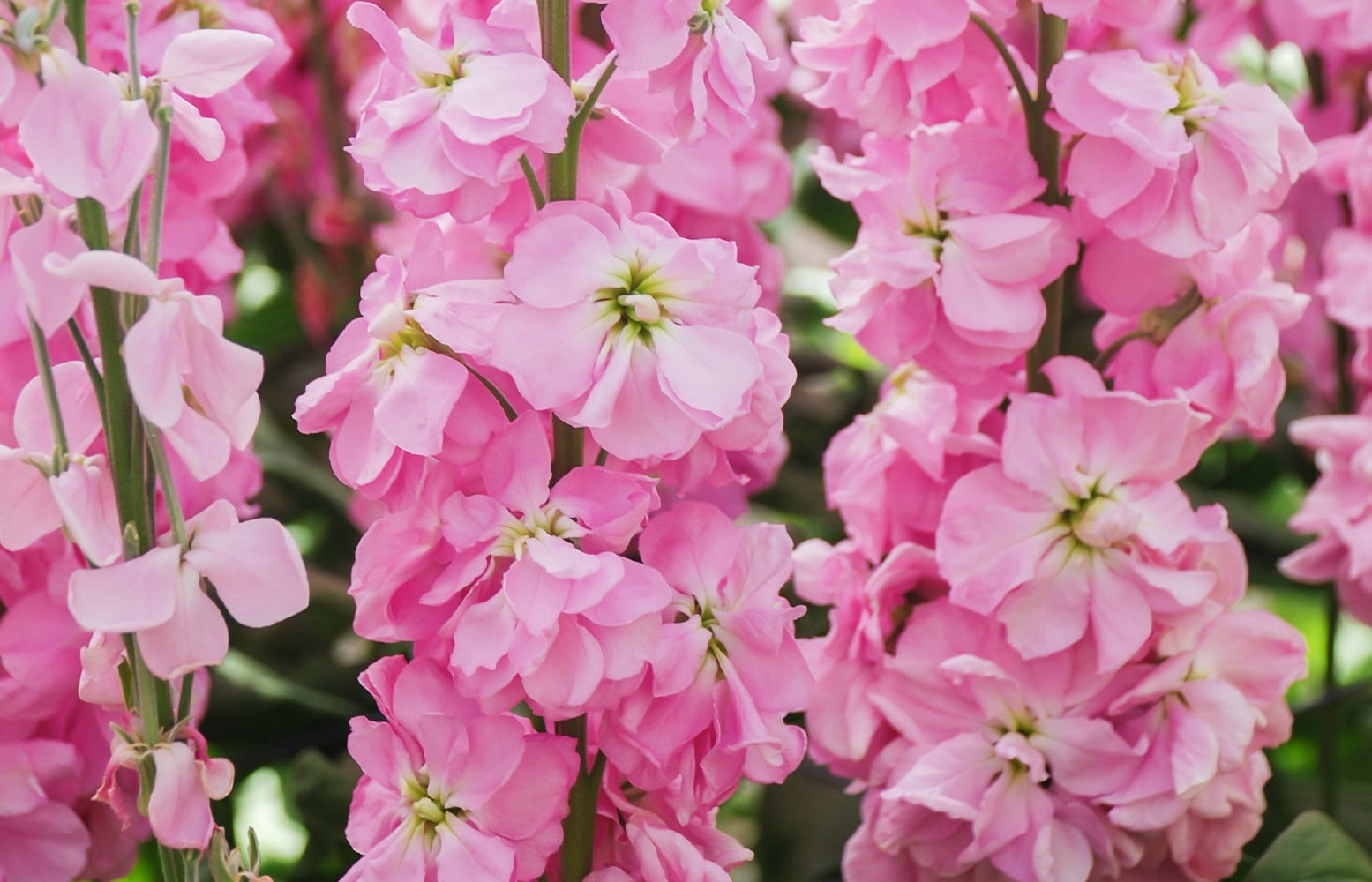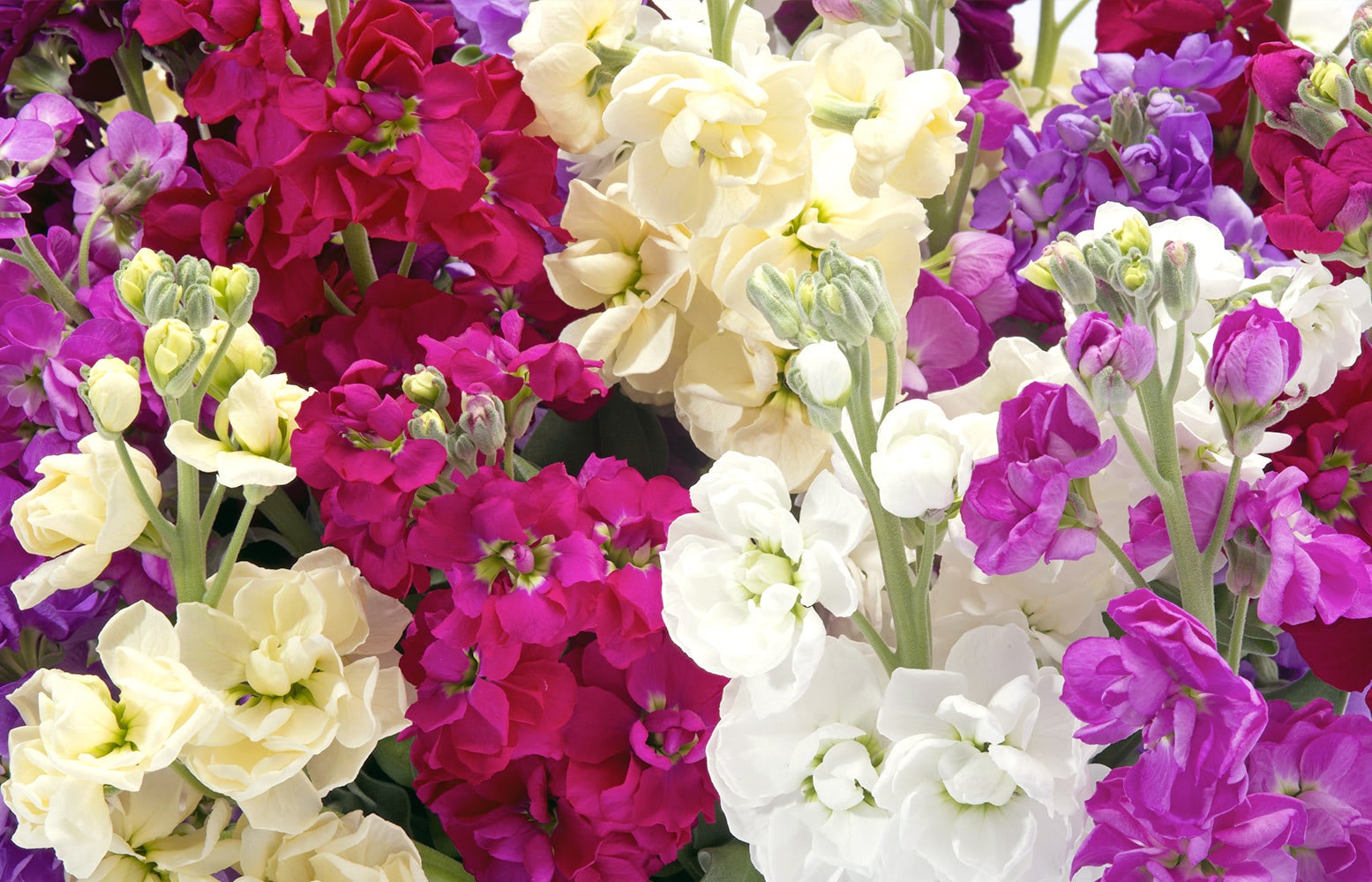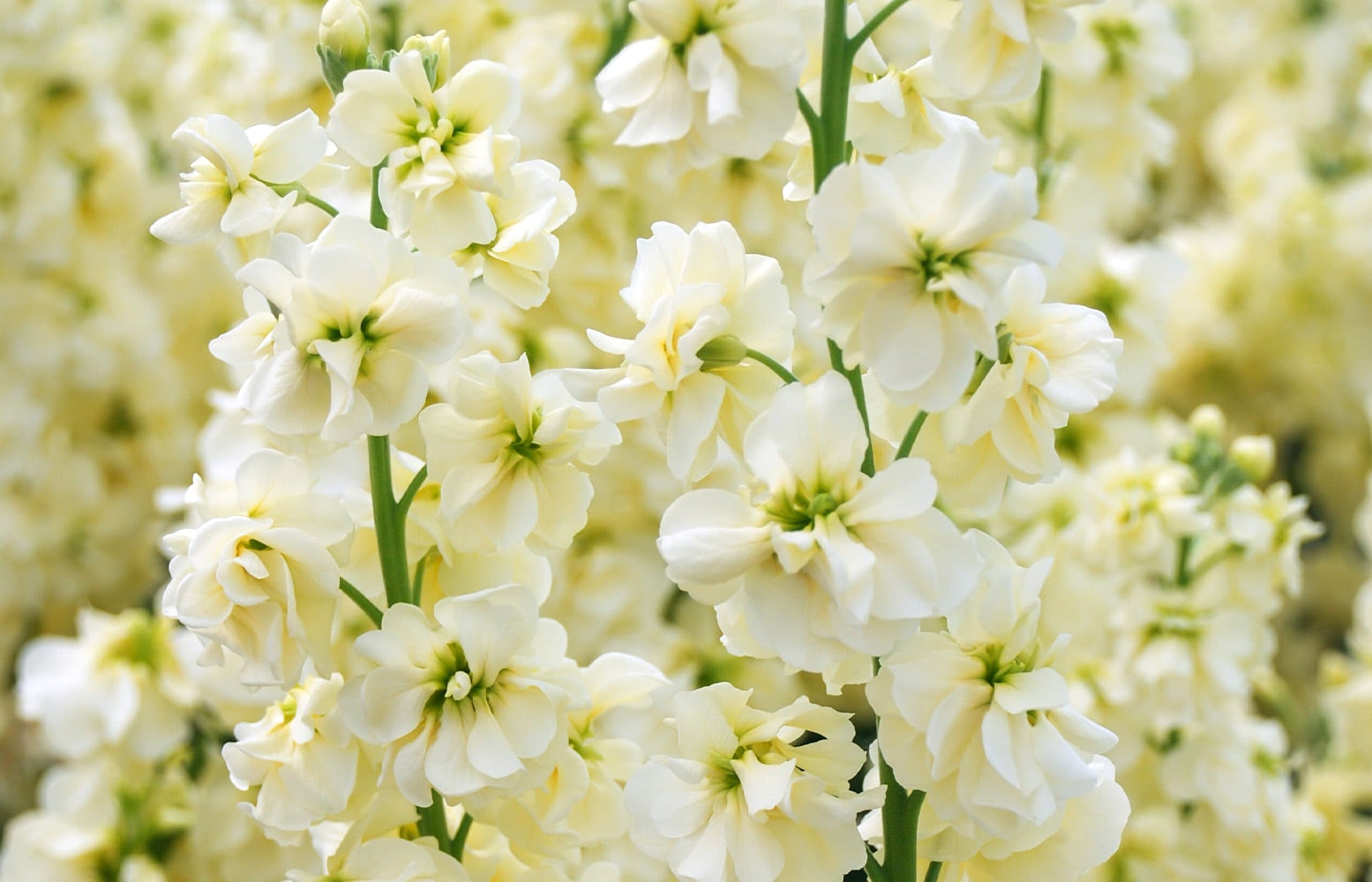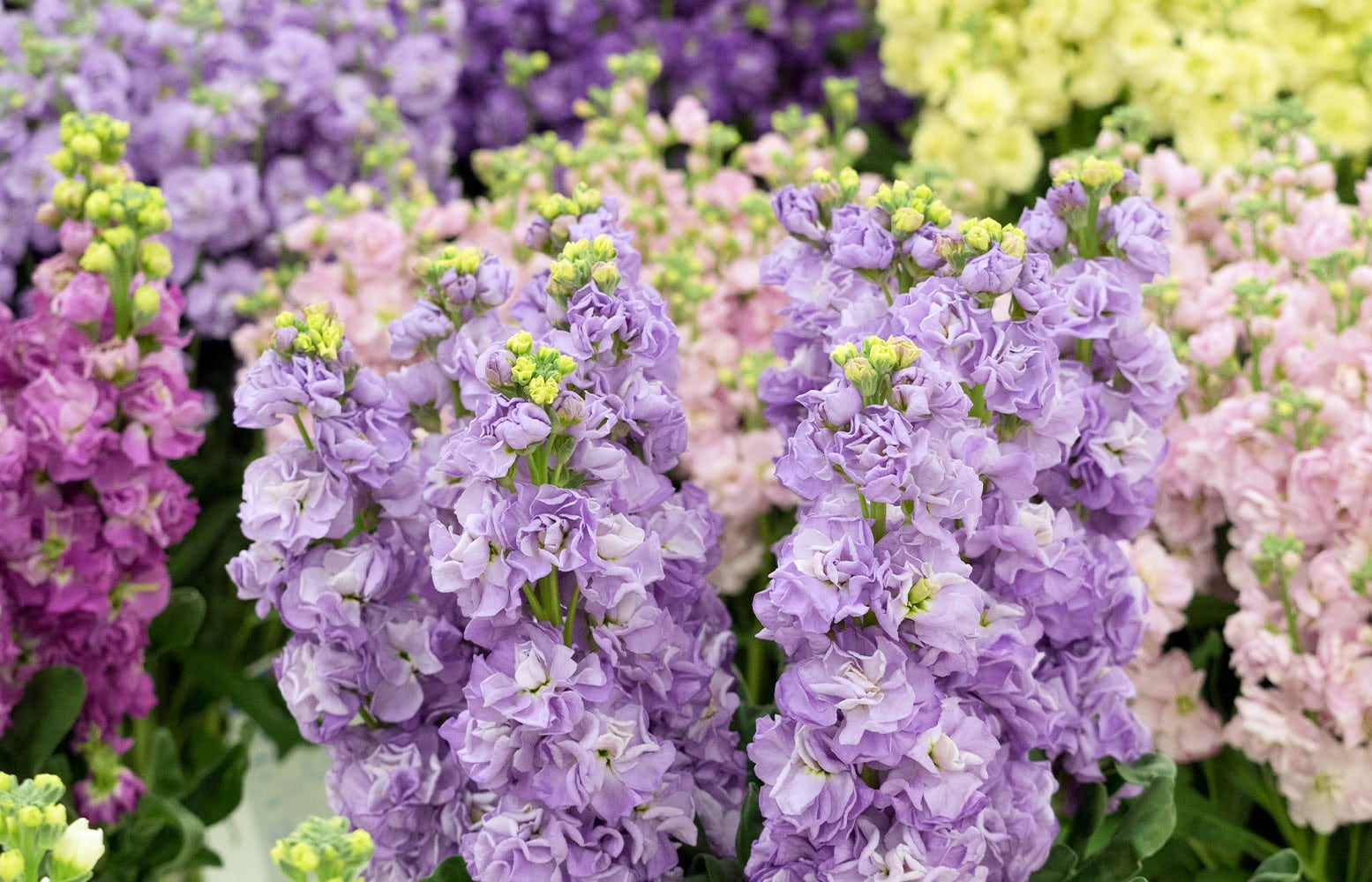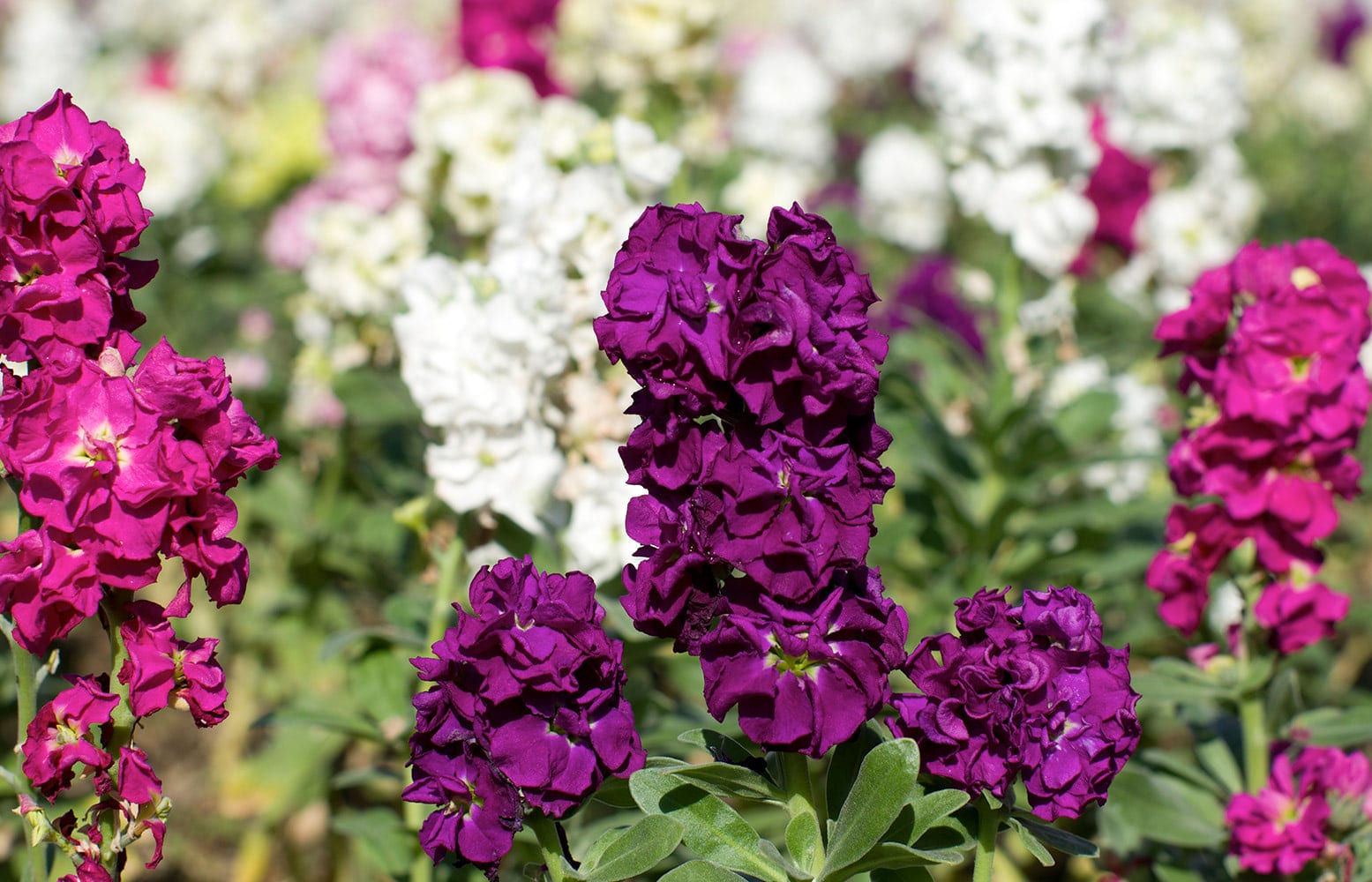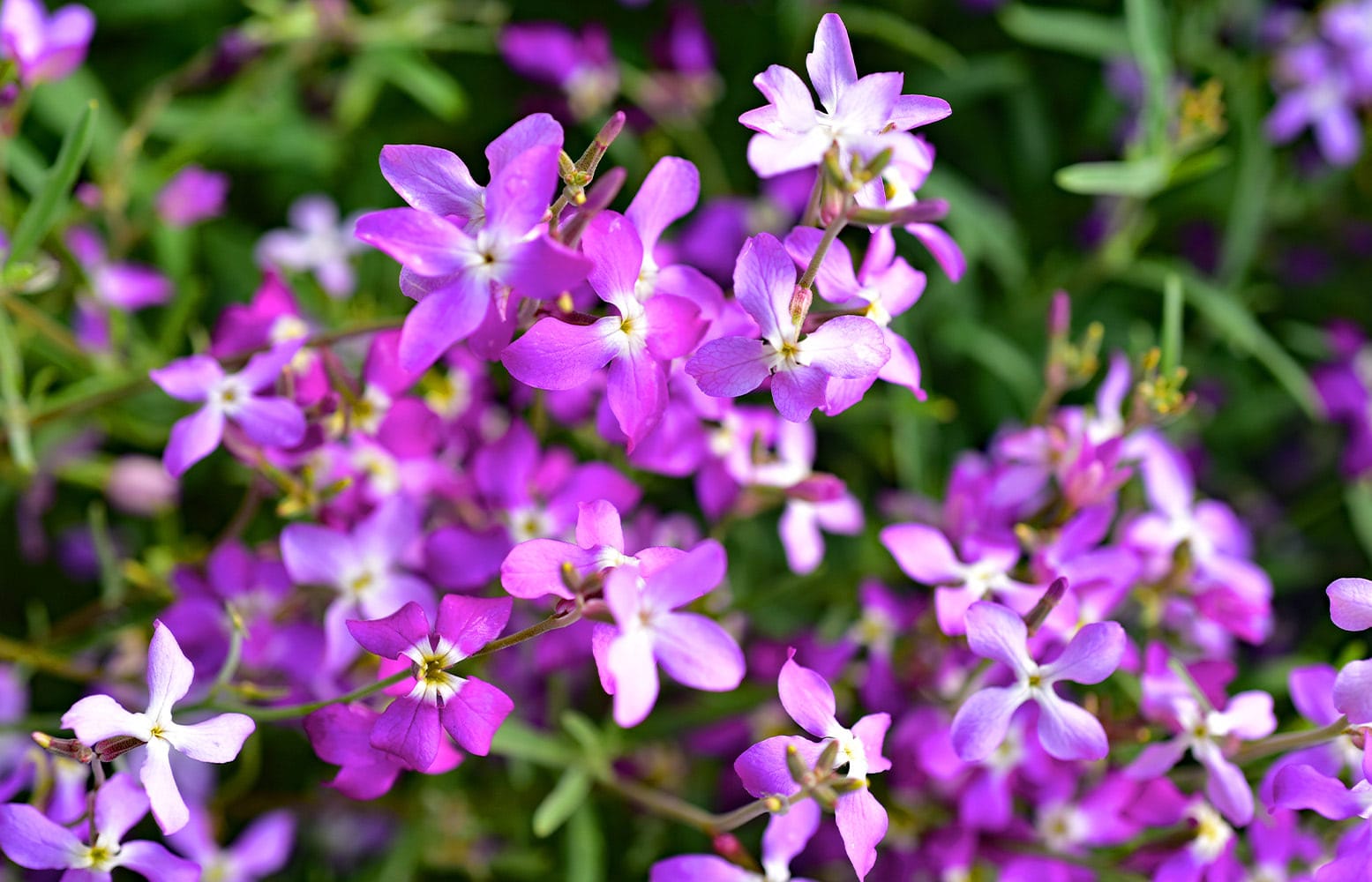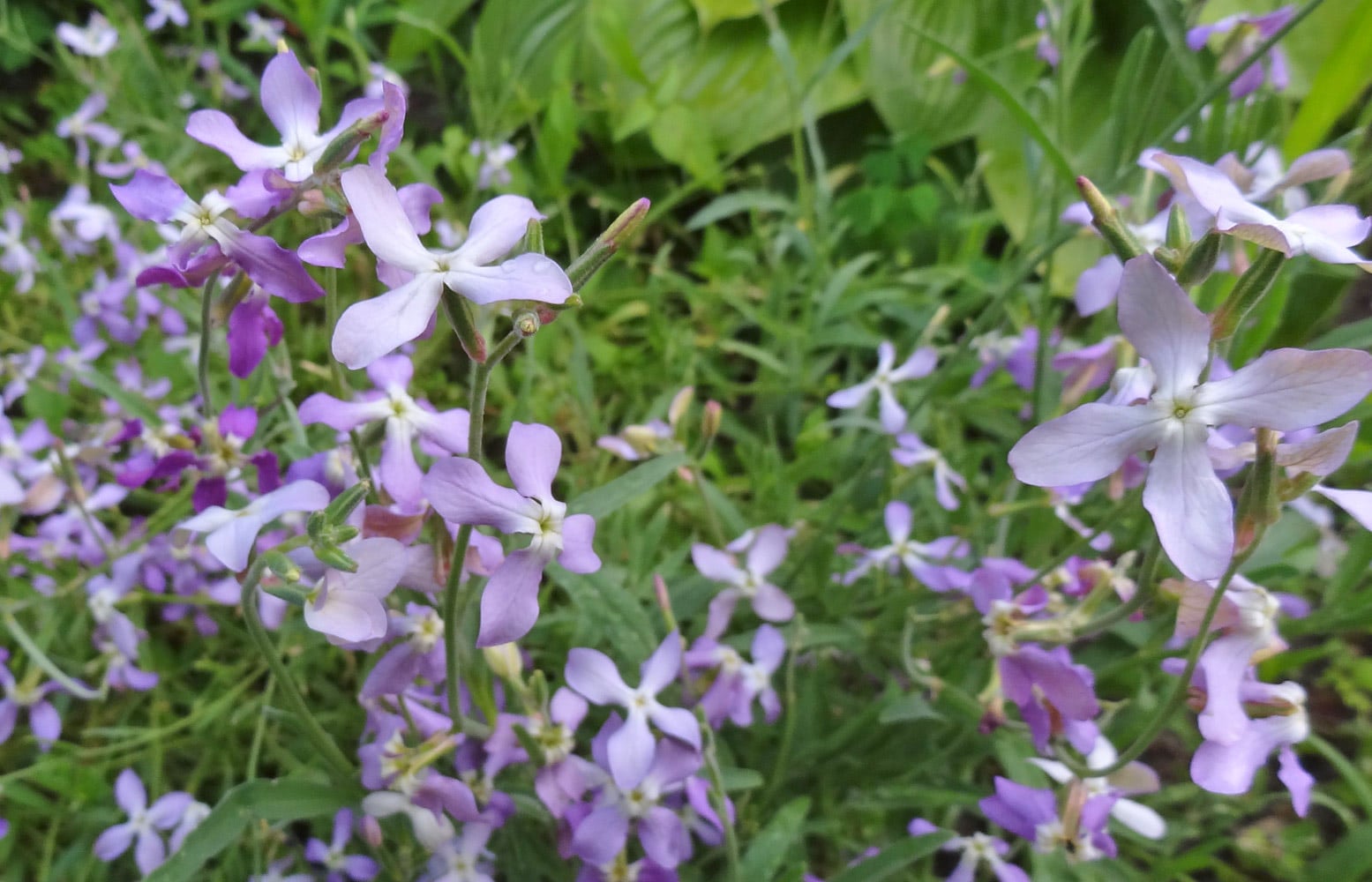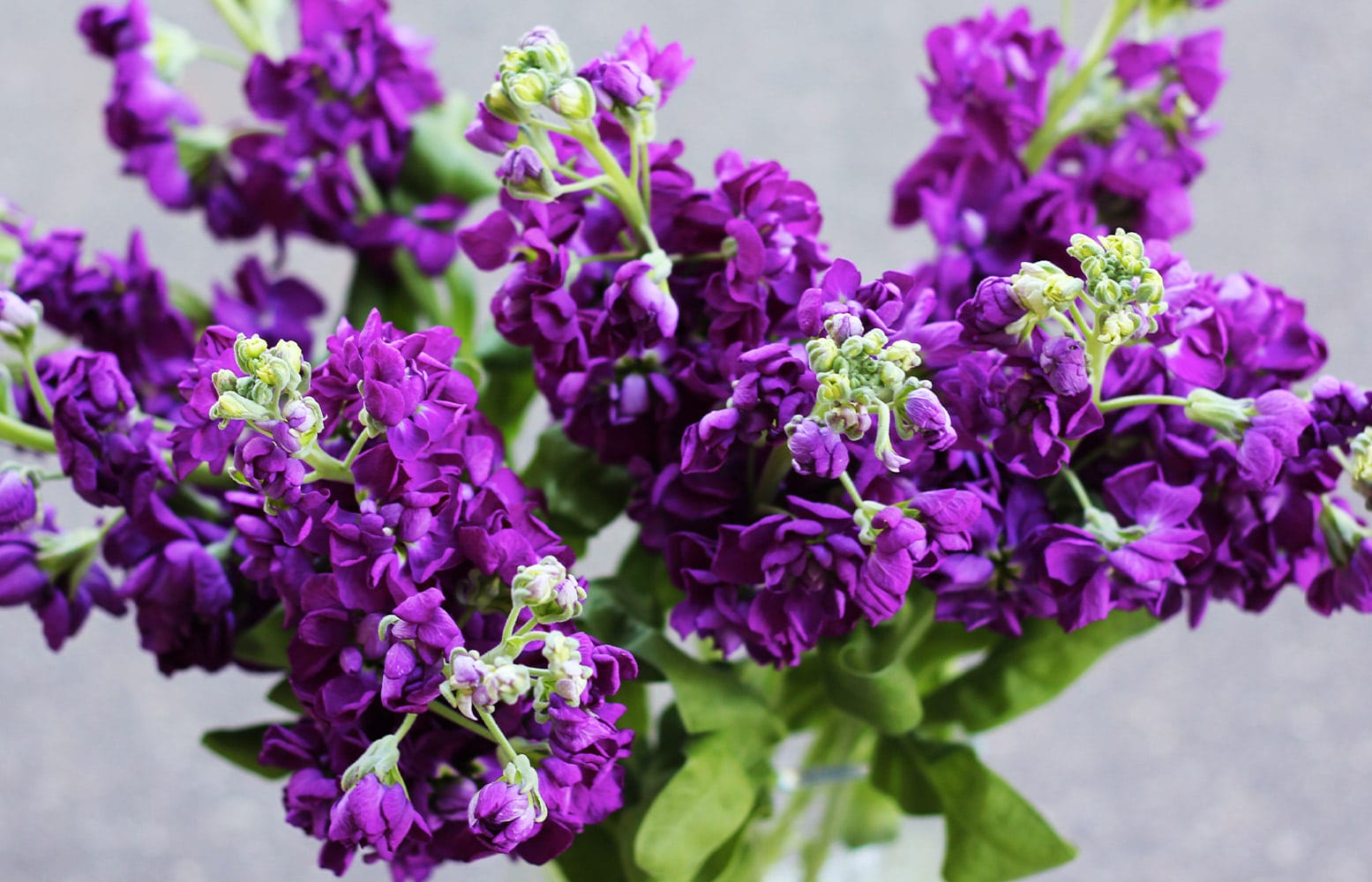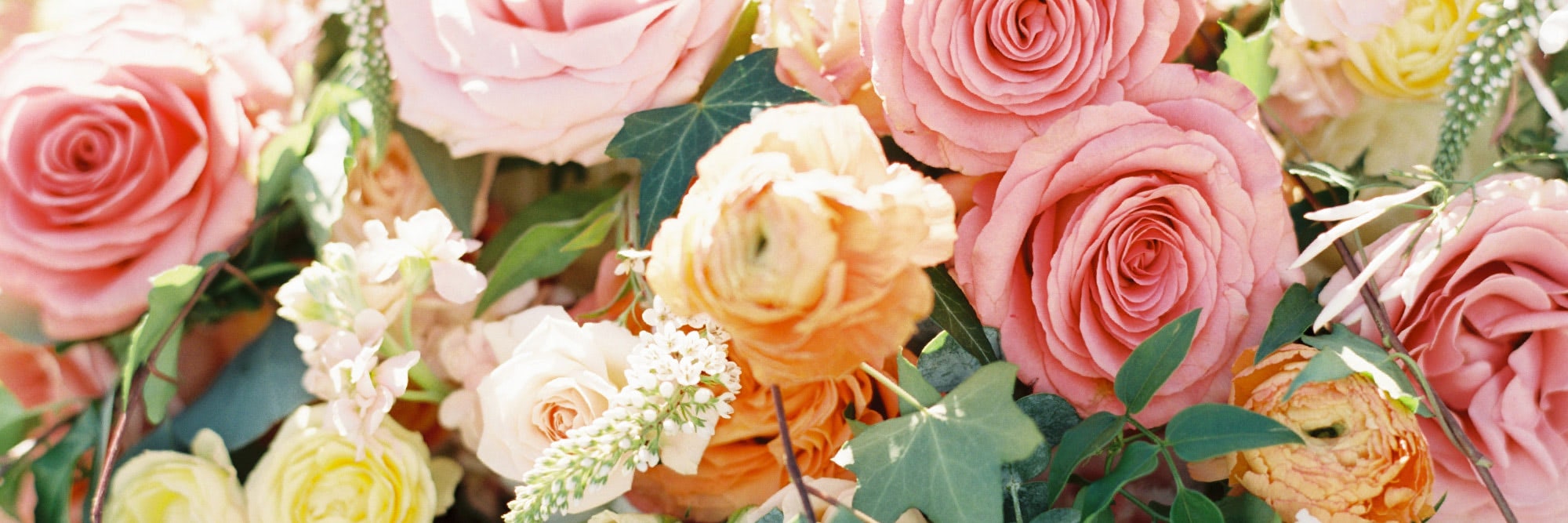
Stock flowers are fragrant and colorful blossoms that bloom for approximately two months, from spring to early summer. They are used in floral arrangements because of their long stalks, full texture, colorful petals, and sweet scent. Also popular in gardens and dried floral decor, other names for these biennials include gilly flowers and hoary stock.
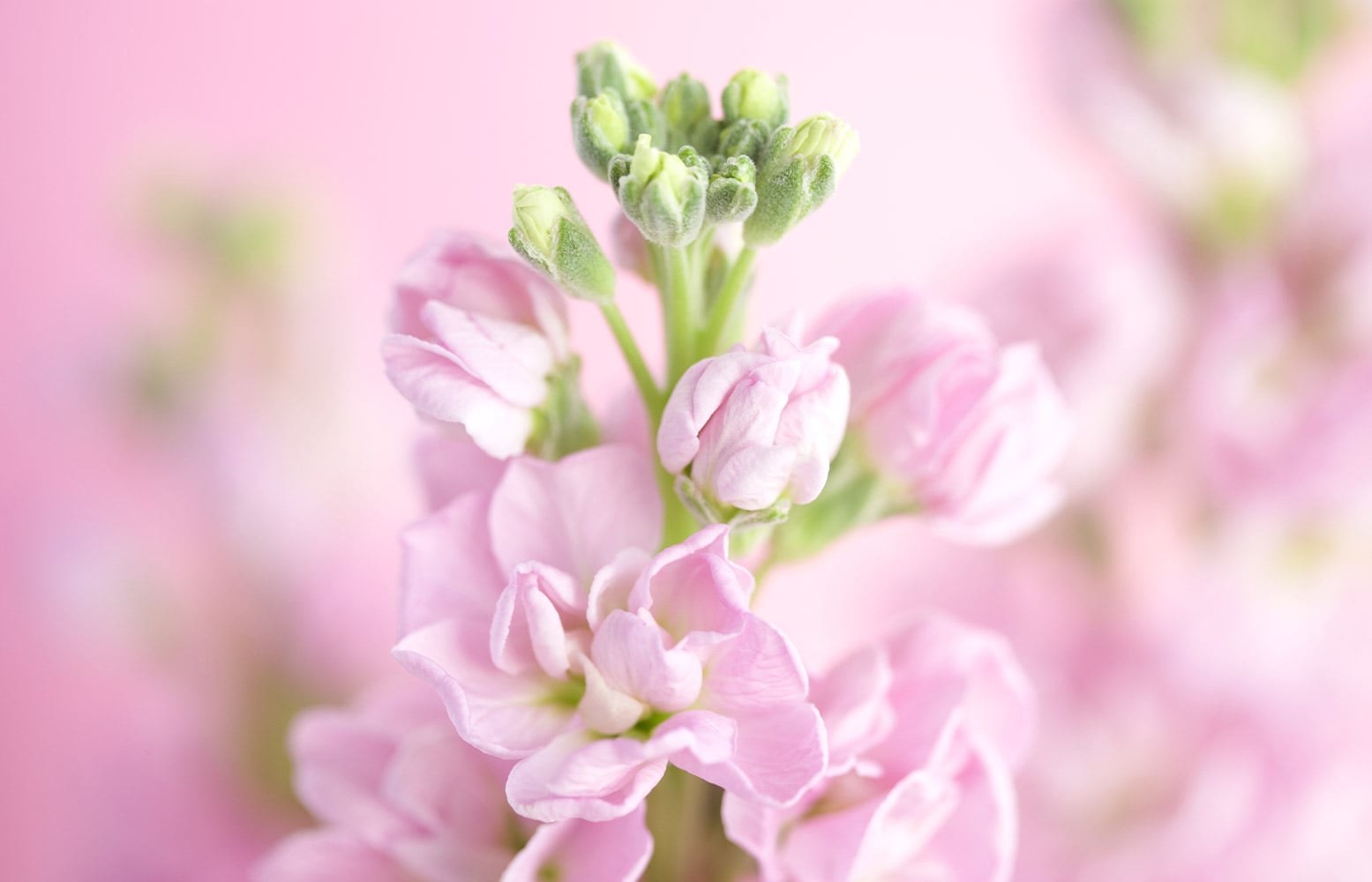
About Stock Flowers
Native to Europe and the Mediterranean, stock flowers became especially in demand in England during the Victorian Era. They are members of the mustard brassica family and belong to the genus Matthiola. Stock flowers have a common native ancestor - Matthiola incana - but many found in floral designs are hybrid cultivars, giving us their famous variety of desirable colors.
Characteristics of Stock Flowers
Stock flowers bloom in spring and last until temperatures become too warm for them to endure. Depending on the USDA hardiness zone, they can be grown as perennials, biennials, or half hardy annuals. Stock flowers are relatively easy to care for and thrive in cottage gardens, especially among companion flowers such as larkspur, heliotrope, and snapdragons. They come in many hues, from pastels like pink to deep purples and neutrals like cream and white. Depending on the type, stock flowers can grow between 12 to 36 inches tall, with single or sometimes double blooms arranged in a spire-like pattern on their stems.
While popular in gardens, florists appreciate stock flowers for their long-lasting bloom time and clove-like fragrance. They add texture and height to designs along with vibrance because of their full blossoms, bright green stems, and shiny leaves. Stock flowers can be statement or accent blooms in bouquets and arrangements.
Stock Flower Name Meaning
Stock flowers are named after 16th-century Italian doctor and botanist Pietro Andrea Mattioli. He was known for his prolific work identifying plants and appreciated these blooms for their fragrance and medicinal properties.
Stock Flower Symbolism
In Victorian England, giving someone a bouquet of stock flowers signaled your sincere and profound affection for them. Stock flowers are also a beloved selection in wedding florals as they promise contentment and joy throughout life. You can combine this symbolism with the language of color for added significance.
Stock Flower Occasions
Based on their symbolism, stock flowers are ideal for weddings, vow renewals, anniversaries, and other romantic occasions. You can also commemorate and celebrate joyous occasions, like birthdays, housewarmings, graduations, and baby showers, with stock flowers.
Fun Facts About Stock Flowers
- According to some, Thomas Jefferson was the first to import stock flowers into the United States. Around 1771, he had them planted in his gardens at Monticello, starting a new floral trend. Jefferson's cultivation resulted in stock flowers sometimes being called Virginia stock.
- Stock flowers are edible; the pods have a pleasant, radish-like taste, while the blossoms have a floral flavor. They belong to the same family as kale, turnips, cabbage, broccoli, and Brussels sprouts.
- In the 16th century, stock flowers were a favorite among gardeners in Germany. They were such prolific bloomers that authorities had many villages cultivate specific hues in a quest for the most vibrant shades.
- During the Middle Ages in England, landlords would accept stock flowers as currency for land purchases or rent.
- In Victorian England, people believed that stock flowers had healing qualities along with decorative uses. They were used to treat ailments like venomous bites and aid in digestion.
Popular Stock Flower Varieties
There are over 50 species of stock flowers. Here are 9 of our favorites:
If you grow stock flowers in your home or garden, they make excellent additions to window boxes during spring and early summer. At nose level, the fragrance of their blossoms will be the strongest, scenting your space with pleasing notes of cinnamon until the summer heat arrives.




